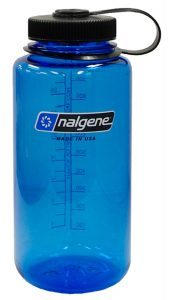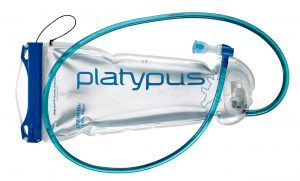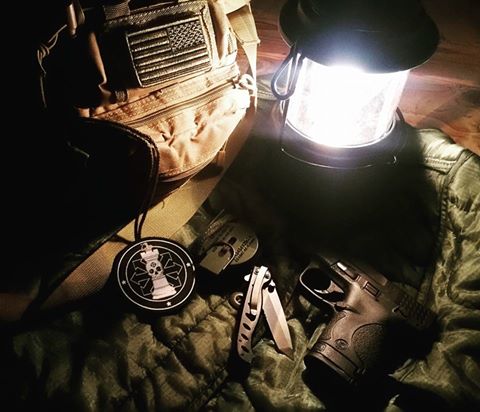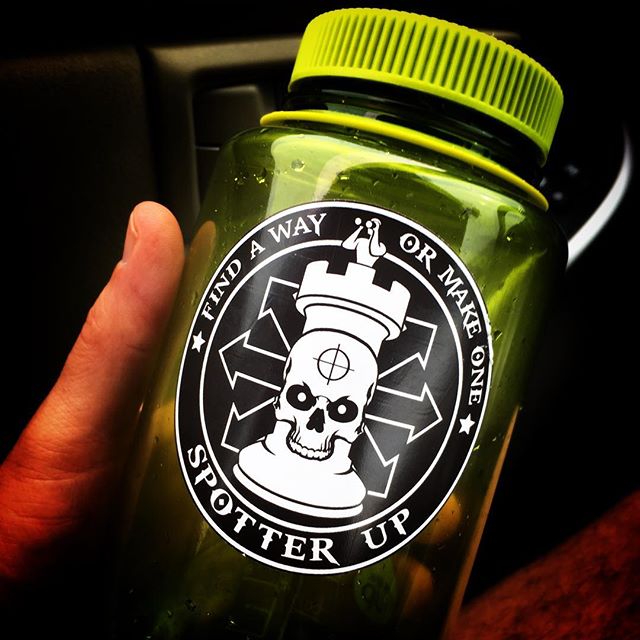We’ve come a long way, since ancient times, from using organic wineskins for carrying our source of hydration. Wineskins required a lot of preparation beforehand to ensure it could carry wine without leaking. A tanner had to heat, rub, inflate and lastly fill the leather with water as steps to ensure it held together. People used gourds and coconuts as well.
Today we have a lot of choices when we look for a means of holding our water. Should we go with Water bottles or a reservoir? I think a lot is going to depend on the kind of trip you’re taking. Here are some thoughts on the subject:
- TRIP: Is it going to be a day hike or a multi-day hike? One or two water bottles should be sufficient for a short hike. A small reservoir (they come 32-96 oz) should also work for you.
- SOURCE: Is a water source going to be available? If you are near creeks and streams then you don’t have to worry about much. If the water source is contaminated you should have some type of purification method on you.
- ROOM: What will you be carrying other than water? Food and water should come first, then a first aid kit, and the rest.
- TIME: Bottles can be filled more quickly than submerging a reservoir; also consider that you will have to readjust a reservoir back into its carrier.
Nalgene water bottles and the Nalgene or Platypus flexible water reservoir, when used together, can make your trip whether on a day-hike or a multi-day hike much easier. Let’s look at the pros and cons of both.
WATER BOTTLES

Durable: Nalgene bottles are very durable and can withstand extremely harsh conditions because they use high quality materials. Nalgene guarantees that its water bottles won’t leak and if it does they will replace it for you. The bottles do break, but this is generally after years of wear and tear, or under freak conditions. The caps may break but the bottle usually will not. The bottle cannot be punctured.
Measurement: Every Nalgene bottle has printed graduations on the side for keeping track of your hydration usage. You will be able to see through the bottle and see exactly how much water you have consumed. Fluid levels are easily seen through clear and even the opaque bottles. Most of the bottles come in 24-48 ounces. This is handy if you are trying to evenly spread out your water consumption.
Flexibility: The wide mouth allows you to use the container for storage purposes. A few options: stack power-bars vertically in it, first-aid supplies, or trail mix baggies. If you accidentally tear a bag of coffee or dried food items (rice, corn, peas etc.) the bottle is excellent for a quick container substitute.
The attached loop-top never gets lost and screws off/on easily. The bottles do not leach BPA’s, and some of them come with working compasses on the cap. The wide mouth allows for easy cleaning with a bottle brush or just throw it into the dish-washer. One of the only real downsides with the bottle is the amount of space it takes up; once it is empty of water, the bottle cannot be collapsed.
RESERVOIRS

Usability: The Platypus comes with their Hoser antimicrobial/slimeguard bite valve. I prefer this over the Nalgene reservoir because it allows hands-free drinking. Both are very sturdy but can be punctured and this could mean loss of precious water. Both can be washed in the dishwasher or hung upside down to dry. The wide mouth Nalgene reservoir can easily be packed with ice-cubes. Of course the big draw is they are space savers and weight savers after being used.
Downside: The downsides are numerous but these don’t outweigh the huge plus of being a space and weight saver. I still recommend purchasing one. My choice is to go with the Platypus brand. Here are some of its downsides:
- You have to take the reservoir out, fill it, and then slide it back into the carrier.
- You must tread the hose on properly in order to avoid leaking.
- The reservoir may feel like an uncomfortable and unbalanced bulge for some people.
- The mouthpieces have a tendency to leak.
- The hose can freeze up even with a sleeve/jacket around it.
- It is harder to close with your mittens or gloves on whereas the bottles caps are easy to manipulate on and off.
- Their life span is shorter than that of a bottle. Usually about 2-3 months of good use will degrade the bag.
- The skin is made of multiple-layers of film and is strong but it can still be punctured.
So, what should you do?

For camping/hiking: I think that you should carry both for your short or long hikes. I like to carry 2-3 small water bottles for portability reasons. Having multiple bottles means I can leave my reservoir and bags at camp while I head down to a stream. If I lose a water bottle I will still have another just in case. Small bottles are easier to hold and fill and once it’s emptied I can put it in my cargo pocket as I walk. I can refill my water bottle with water from the reservoir if I choose to. Water bottles can be filled quickly and I don’t have to mess with the hose and carrier. I would carry a 96 ounce reservoir and a 32 ounce bottle if I were doing a multi-day hike, and keep a small disposable bottle as well. My reasoning is, if the reservoir gets punctured, I still have the sturdy Nalgene bottle as a back-up. The little bottle is just for easy hand-carry when I’m doing short hikes around camp.
Running: I recommend buying a reservoir for all around use. They are not expensive. When running long distance, carrying a Nalgene bottle is not ideal, and I can carry far more water with the carrier on my back. Weather here gets very humid, hot and trekking for distances is helped by having water accessible from the hose and mouth piece. Hands-free is the best way to go.
If you like this article please LIKE and SHARE


[…] NALGENE BOTTLE AND RESERVOIR REVIEW […]